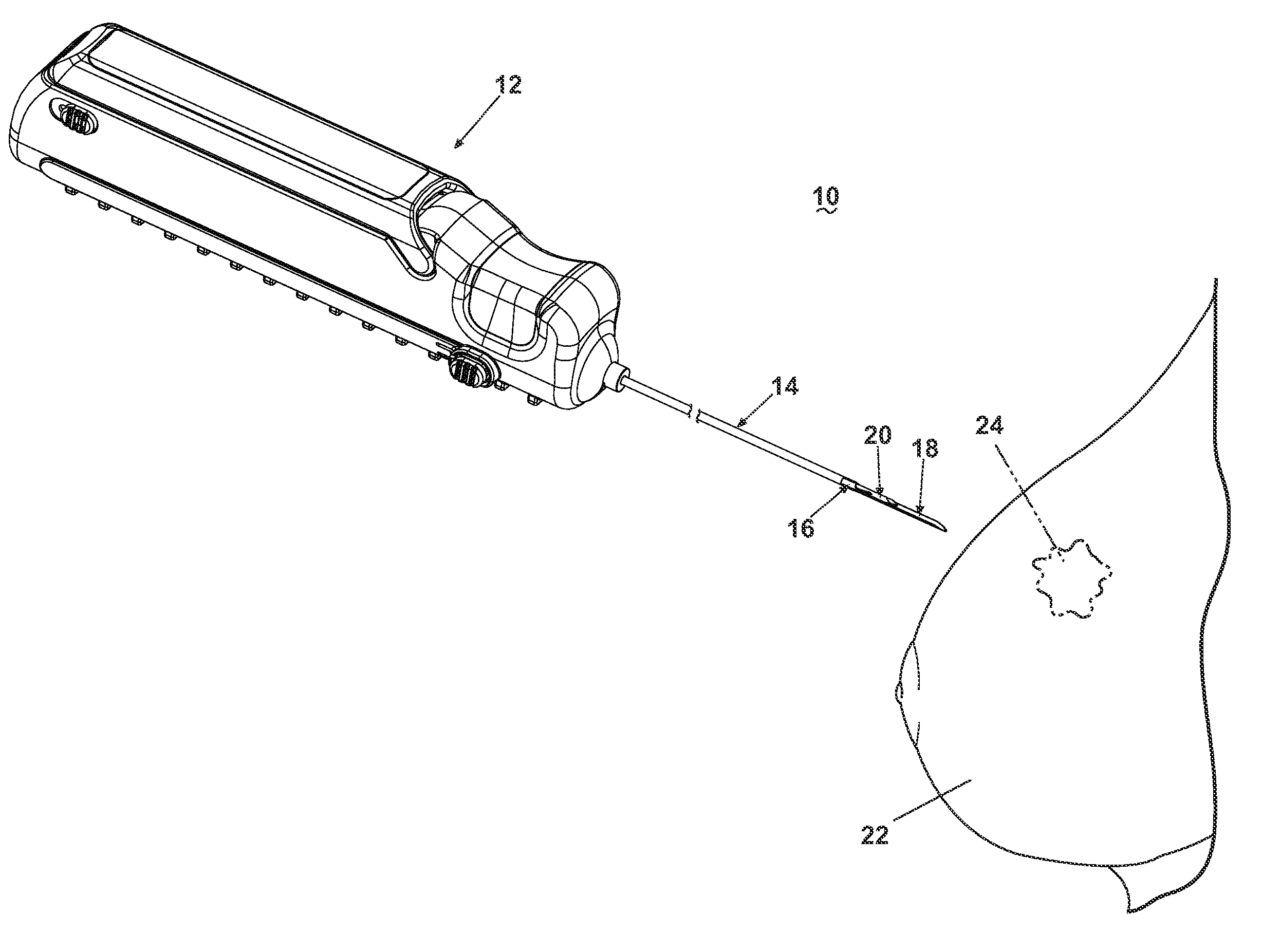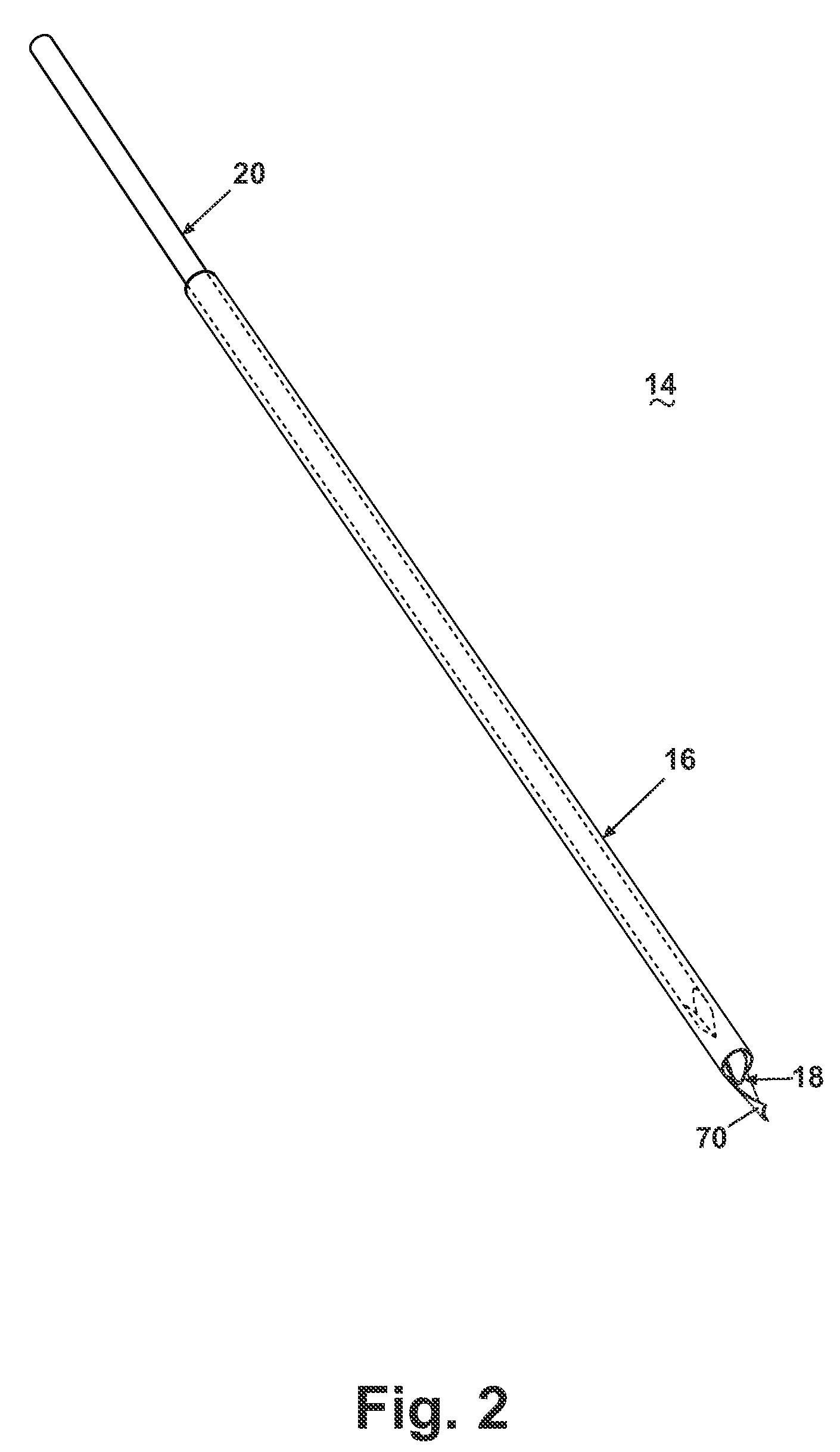Core Biopsy Device
a core biopsy and biopsy tube technology, applied in medical science, surgery, vaccination/ovulation diagnostics, etc., can solve the problems of increasing the damage to the remaining tissue, destroying the sample, and producing a small core biopsy relativ
- Summary
- Abstract
- Description
- Claims
- Application Information
AI Technical Summary
Benefits of technology
Problems solved by technology
Method used
Image
Examples
Embodiment Construction
[0025]Referring now to the drawings, and specifically to FIG. 1, a core biopsy device 10 is illustrated comprising an actuator assembly 12 structurally and operably connected to a cannula assembly 14. The cannula assembly 14 is utilized to penetrate a tissue mass 22 for obtaining a core biopsy sample from a lesion 24 as more specifically described hereinafter. An embodiment of the actuator assembly 12 is described and illustrated herein comprising an automated, integrated hand-held device capable of controlling the acquisition and removal of the core biopsy sample from the lesion 24. An actuator assembly 12 is preferably utilized that is capable of automated firing of the cannula assembly 14, with the additional capability of firing a pair of telescoping cannulae and a stylet with one triggering action, or firing an inner cannula and an outer cannula independently. As described and illustrated herein, the actuator assembly 12 is capable of controlled rotation of the outer cannula ar...
PUM
 Login to View More
Login to View More Abstract
Description
Claims
Application Information
 Login to View More
Login to View More - R&D
- Intellectual Property
- Life Sciences
- Materials
- Tech Scout
- Unparalleled Data Quality
- Higher Quality Content
- 60% Fewer Hallucinations
Browse by: Latest US Patents, China's latest patents, Technical Efficacy Thesaurus, Application Domain, Technology Topic, Popular Technical Reports.
© 2025 PatSnap. All rights reserved.Legal|Privacy policy|Modern Slavery Act Transparency Statement|Sitemap|About US| Contact US: help@patsnap.com



